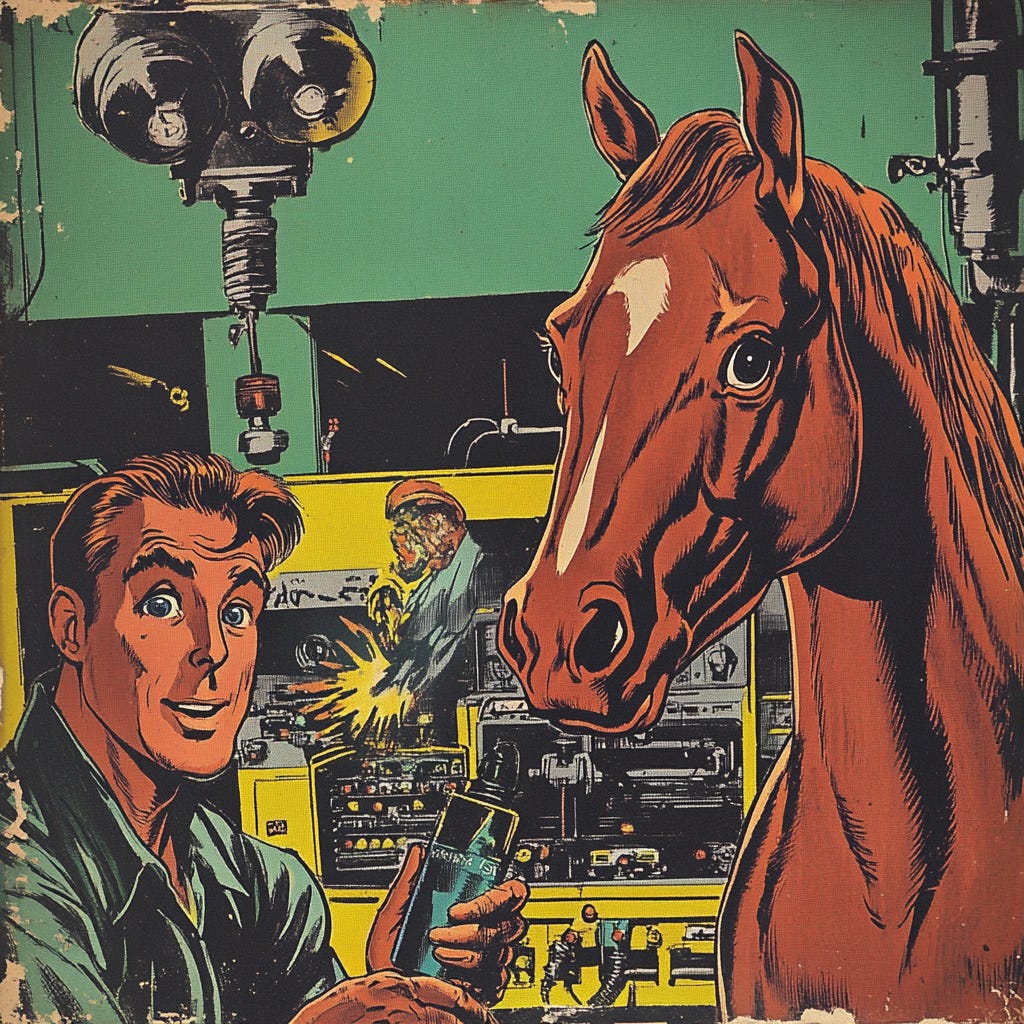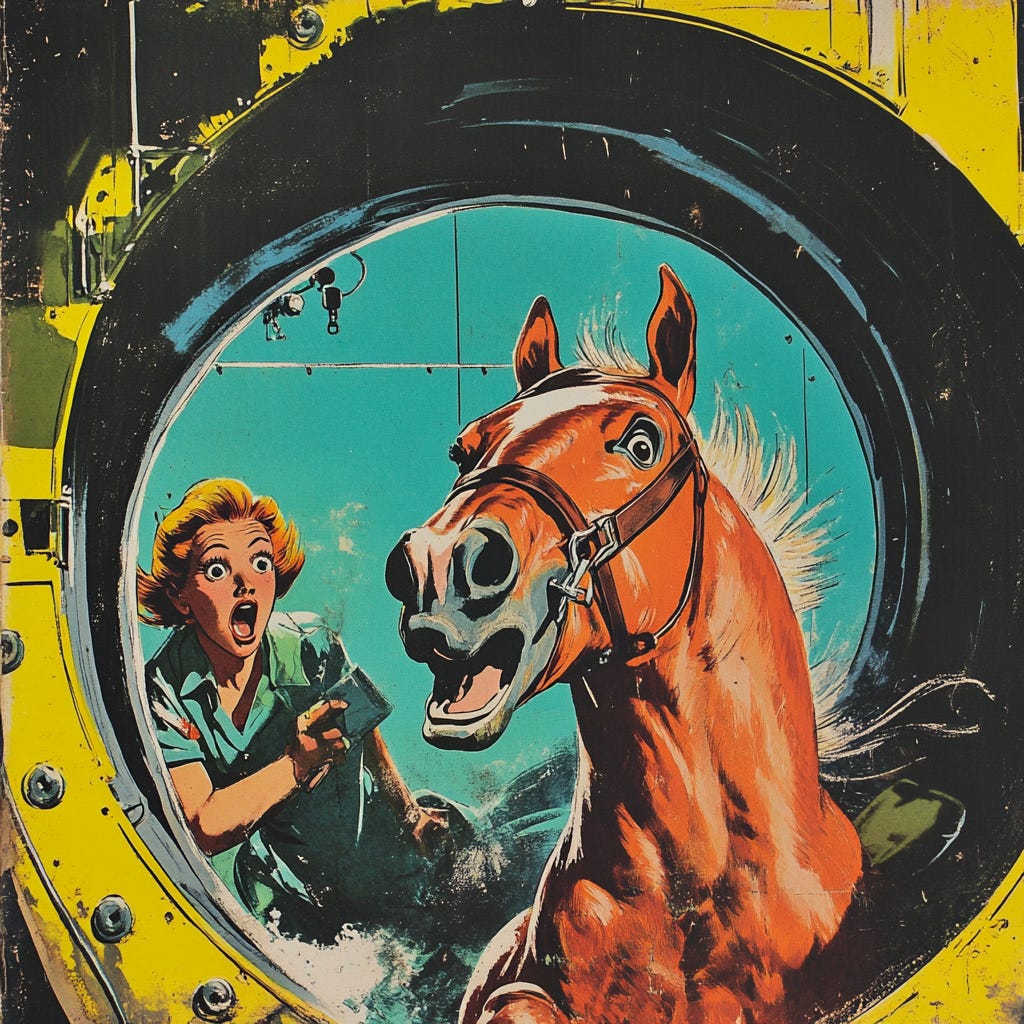Buttercup the Horsie Goes to the Glue Factory
The circle of capitalist life, from pasture to paste.
I was watching a video demo of one of the latest humanoid robots about to hit the market. The video was equal measures awe-inspiring and terrifying:
It reminded me of the internal combustion engine. That magnificent invention that would power our world. But for one group, horses, it didn’t just change their world, it ended it.
There's something darkly poetic about how we sent horses to the glue factory in the early 1900s. It’s not just a funny expression. The noble steed that carried Napoleon into battle, that pulled humanity's plows for millennia, finally met its end as an adhesive for elementary school art projects. We turned them into glue once they stopped being useful. If that's not the perfect metaphor for late capitalism's treatment of the labor force, I don't know what is. Like, imagine explaining to a Victorian-era carriage horse that its bloodline would end up holding together popsicle stick art in a suburban kindergarten class.
According to economist Wassily Leontief, America's horse population dropped from 21 million to 3 million between 1900 and 1960. One could use the term genocide. The internal combustion engine came along and suddenly those majestic beasts became the original victims of "learn to code."
Keep reading with a 7-day free trial
Subscribe to THE HEGELIAN DISPATCH to keep reading this post and get 7 days of free access to the full post archives.


